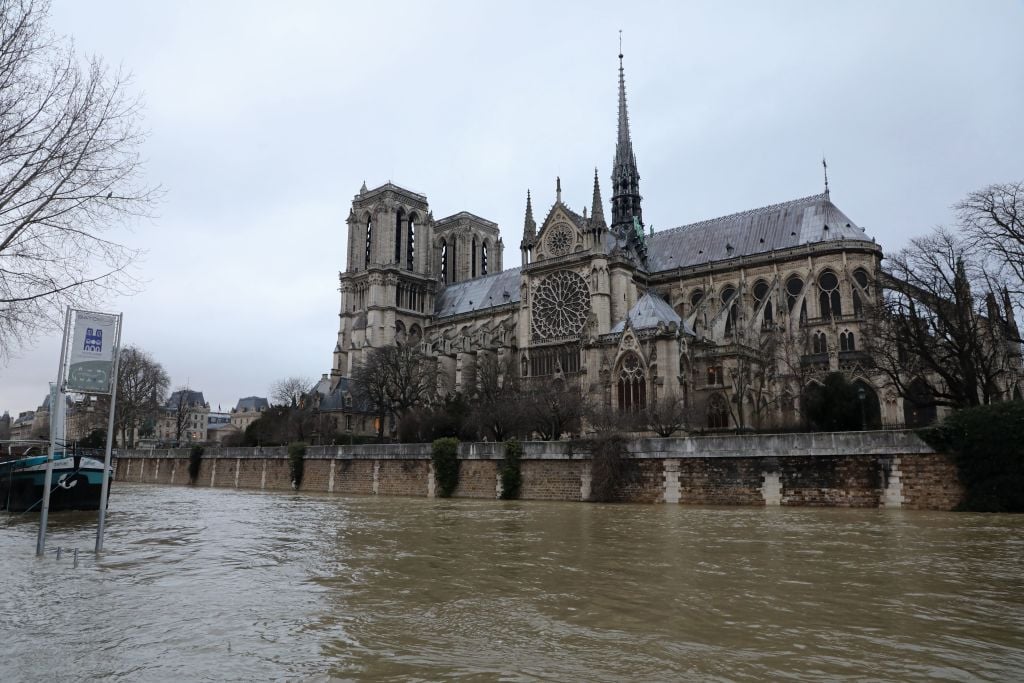
After days of rain, the Louvre museum has temporarily closed the lower level of its Department of Islamic Arts as part of an emergency protocol implemented to safeguard the museum’s collection from severe flooding along the River Seine.
Beginning last Thursday, rainstorms have caused water levels to rise dramatically along the river. At the time of publication, it had reached 5.19 meters (17 feet), more than double average levels, according to ABC News. As the rainfall continues, the water is expected to peak at upward of 6 meters, more than 19 feet, according to deputy mayor Colombe Brossel who spoke to the Washington Post. Authorities have suspended river traffic and a commuter train line that runs along the Seine amid fears of a “flood of the century,” according to the report.
Since Tuesday, the city of Paris has been on orange alert, the second-highest flood warning level. Authorities believe the water could rise higher than in 2016, when both the Louvre and the nearby Musée d’Orsay were forced to close after the water level reached 6.07 meters, its highest in a century. At that point, the museum said in a tweet, some 35,000 works were relocated over a period of 24 hours.
The lower level of the Department of Islamic Arts will be closed until Sunday, January 28. The museum has implemented the closure as an “exceptional measure” in accordance with the protocols set up earlier in the week once the river reached 5.12 meters. Meanwhile, across the river, the Musée d’Orsay has postponed an evening event scheduled for Thursday, but the museum remains open for now.
Flooding of the River Seine as seen on January 22. Photo: ©François Grunberg, courtesy Paris City Hall.
As part of its emergency protocol, the Louvre has also taken other precautionary measures for the palace itself, according to the museum’s press release: “The emergency response team… is monitoring the situation in real time and will implement all necessary measures to prevent flood risk.”
The Louvre’s flood-risk prevention plan was established in 2002 on the advice of the Paris police department. It involves regular emergency drills for all staff and daily monitoring of the river level by the Paris fire department. The plan also provides detailed procedures for relocating 152,000 vulnerable works to Liévin in northern France, where a new storage facility is under construction.
Storm threats have become a persistent concern for the museum in recent years. Last June, some of the Louvre’s artworks, including paintings by Nicolas Poussin, sustained damage after violent storms rocked the French capital.